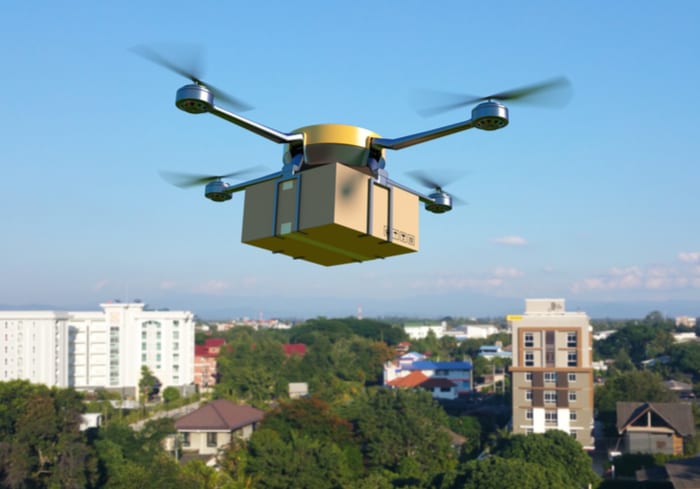Are Drones The Future Of Last-Mile Delivery For Medicine — And Retail?

With all the hype about drones traversing the skies for retail’s last mile, the reality of drone delivery appears to be starting to finally take flight — and for use cases that may have lifesaving implications. Zipline, which delivers medicine, has reached a valuation of $1.2 billion from investors and has notched $190 million in venture funding announced in March. Through its new financing, the company will have the ability to create delivery hubs in Ghana and Rwanda at 2,600 health facilities. The idea is not limited to international markets, with applications closer to home as well.
Zipline CEO Keller Rinaudo said, according to CNBC, “People think what we do is solving a developing economies problem. But critical-access hospitals are closing at an alarming rate in the U.S., too, especially if you live in the rural U.S. Life expectancy there has declined over the past several years.” National Center for Health Statistics data, for instance, indicates that a significant factor for lower life expectancy in the U.S. has been drug overdose death.
But, through work with governments, healthcare centers and businesses in the pharmaceutical space, the company endeavors to provide greater access to treatments regardless of a person’s location. The drones themselves can fly a maximum of 68 miles per hour and carry weights of up to approximately four pounds. Its drones have completed over 13,000 deliveries and flown over 1 million kilometers in Rwanda, for instance. Beyond Rwanda, news surfaced in April that the company was live in Ghana and rolling out a program to deliver medical supplies via drones.
“This is going to be the largest drone delivery network on the planet,” Rinaudo said per reports at the time. And Ghana President Nana Akufo-Addo said per reports that the country is rolling out the globe’s largest drone delivery service to prevent people from dying because they can’t access medicine. “That’s why Ghana is launching the world’s largest drone delivery service … a major step toward giving everyone in this country universal access to lifesaving medicine,” Akufo-Addo said.
Drones and Food Delivery
Beyond their humanitarian (and lifesaving) potential, other firms are looking to drones to deliver items for the sake of convenience — such as food delivery. In Finland, for instance, Wing plans to start delivering meatballs for two, Finnish pastries and a host of other meals as well as snacks to Helsinki residents in the Vuosaari district. Through Wing’s first two partners, diners can also order other dinner fare such as chicken caesar salad and lasagna for two along with popcorn, candy and soda for a “classic home movie combo,” the company said in a Medium post.
The Vuosaari district is a conducive environment for drone deliveries in the eyes of the company: It noted in a blog post that as “Helsinki’s most populous district, it is bordered by water on three sides, with significant forestland alongside residential areas and a large international cargo port. The density of Vuosaari’s population makes it a great place to launch our first service to multi-family housing communities as well.” Not all environments, however, may be conducive to drone deliveries — and the technology doesn’t come without its share of challenges.
The Hurdles
Drones, for one, are better suited for environments that are rural and that appears to be the case for immediate future. Suburbs as well as cities are clogged with other flying machines and power lines as it is. Battery life, too, for sustained service of drones can also potentially present a challenge. Frank Appel, CEO of DHL parent company Deutsche Post AG, told The Associated Press in December, “If you have to recharge them every other hour, then you need so many drones and you have to orchestrate that.” He also noted, according to the report, that humans have knowledge such as where customers live. “To program that in IT is not that easy and not cheap,” Appel said.
At the same time, drones may also face other limitations: While Wing received approval to use drones to deliver packages by the Federal Aviation Administration in April 24, a report at the time noted that drones will only be able to operate during the day when the weather is clear. It also pointed out that the devices won’t be able to fly above 400 feet, with one pilot having the ability to operate up to five drones. Even so, drones do have their advantages: Drones for delivery can be safer than getting in a car to pick something up — and better for the environment as well as potentially faster. And they can be potentially lifesaving with the efforts of Zipline.
From medicine to food delivery, the concept of drone delivery is starting to take flight even with the potential challenges of using the technology to bring lifesaving products, among other payloads, to people around the world.